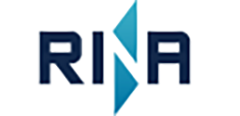Making sustainability practical
NEW fuels, new technology, and new ways of operating are needed. However, although options are available today, many shipowners are uncertain about making a choice that may be outside the norm as the decarbonisation programme advances, thus creating future obstacles. What is needed are practical and sustainable solutions today to give us a pathway for net zero.
To that end, dual-fuel vessels offer an appealing option.
This is certainly one of the approaches being taken by Maran Dry Management Inc, the dry bulk shipping unit of the Angelicoussis Group. It has signed a joint development project agreement with RINA and Chinese ship designer SDARI for a liquefied natural gas and hydrogen powered 210,000 dwt bulk carrier. It is based on an innovative propulsion arrangement which combines the ship’s fuel (LNG) with steam in a gas reformer to produce hydrogen on board, and CO2 is captured directly from the LNG molecules, rather than from emissions.
Selecting this dual-fuel, LNG/hydrogen option presents many benefits to shipowners today and into the future. It means they can invest in new vessels with confidence that they will meet IMO 2050 without reliance on investment in onshore hydrogen infrastructure, requiring only existing LNG bunkering facilities. Engines are directly powered with hydrogen and LNG, with increasing percentages of hydrogen used over time to maintain the ship’s CII (carbon intensity indicator) rating.
Every reduction in emissions helps
LNG presents an interim option with lower emissions than fuel oil and, aside from the dual-fuel hydrogen vessel, opens a pathway to possible future synthetic or biofuels. Other practical areas that will reduce emissions today include speed reduction (slow steaming), although we still need to understand the impact of this on supply and demand, and digitalisation.
As ships become increasingly digitalised, we understand more and more about fleet performance, the impact of measures taken to reduce emissions, best practices to optimise efficiency, and support for investment decisions. In future, reliable data will be required for efficiency ratings.
Other areas for consideration, without the need for certainty about future fuels and technologies, include reducing a vessel’s friction, using tools such as bubble systems or improved hull designs, and wind assistance. Optimising routes and bunkering stops will also naturally reduce emissions. Digitalisation can help with that.
Predictions for the future
Paolo Moretti, chief executive of RINA Services, says: “We do not know what fuels or technologies will become winning options for the future. Hydrogen will almost certainly play a part as an energy vector and may even open new opportunities for shipowners with the need to transport hydrogen or ammonia.
“Fuel cells, which run on methanol or hydrogen, will also likely be a part of future ship designs. Additionally, and beyond shipping, carbon capture technology will be needed if we are going to meet climate change targets as a whole.”
Conclusion
“We need to develop now if we are going to meet targets in the future, but this is a journey and, as we progress, we need to ensure solutions are both practical and sustainable,” says Mr Moretti.
Some solutions are not yet ready for deployment. For example, there is not a ready supply or supporting infrastructure to move today to green hydrogen or ammonia bunkering. However, dual fuel solutions and biofuels present an excellent opportunity for transition and to stay on track with the IMO 2030 and 2050 targets.
“The industry cannot stand still and, indeed, as a class society, neither can (we at) RINA. We are working proactively to support the transition and facilitate approaches to safety and risk assessments as we wait for prescriptive rules to follow developments,” says Mr Moretti.


